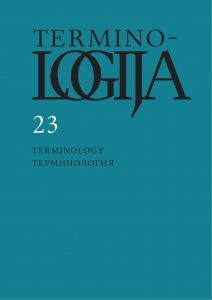Nuo nuriebalinimo iki nuprasminimo: teikyba ir vartosena
From nuriebalinimas to nuprasminimas: codification and usage
Author(s): Alvydas UmbrasasSubject(s): Theoretical Linguistics, Applied Linguistics, Lexis, Baltic Languages
Published by: Lietuvių Kalbos Institutas
Keywords: pronunciation; meaning removal; language regulation; usage;
Summary/Abstract: The paper deals with derivatives with the prefix nu- and the suffix -inti (-inimas) which express the elimination of something (which is indicated by the root of the word). There is quite an old tradition of correcting such derivatives, but in spite of this some of these derivatives are still widely used, therefore the history of correction and codification as well as the current situation are researched. The paper shows the opinions of the Lithuanian linguists in regard to these derivatives, the development of norms in dictionaries and overviews the current usage, its (non-)compliance with codification and points out possible changes in codification. About fifty years ago Lithuanian linguists started correcting derivatives having the structure of nu- + -inti (-inimas) and meaning the elimination of something. The word-formation of such derivatives was criticized because it emerged by the analogy with other languages (mainly Russian). In the first edition of Dabartinės lietuvių kalbos žodynas (Dictionary of Modern Lithuanian) (1954) there were very few words of that kind, but in the second edition (1972) their number increased quite a lot in spite of attempts to correct them. Lithuanian linguists insisted on correcting them, therefore nearly all of such derivatives were removed from the third edition of Dabartinės lietuvių kalbos žodynas (1993) and in terminological dictionaries they were gradually substituted with complex terms containing word šalinimas (elimination).
Journal: Terminologija
- Issue Year: 2016
- Issue No: 23
- Page Range: 120-160
- Page Count: 41
- Language: Lithuanian

